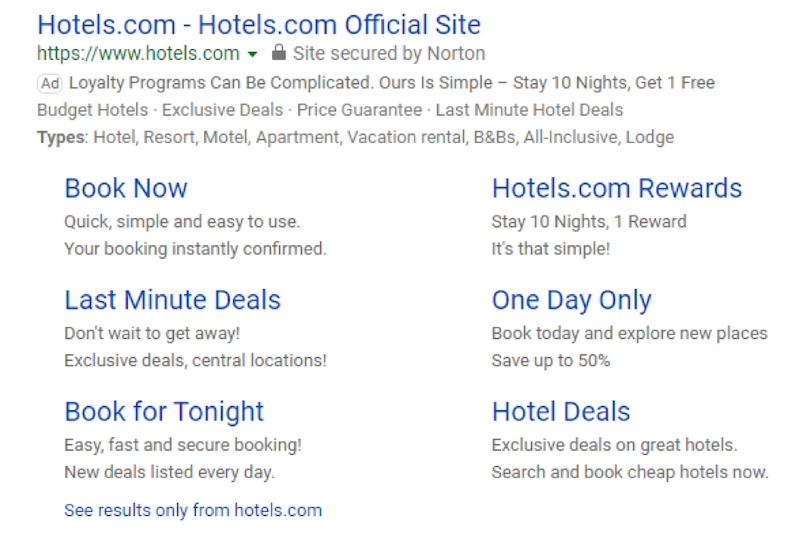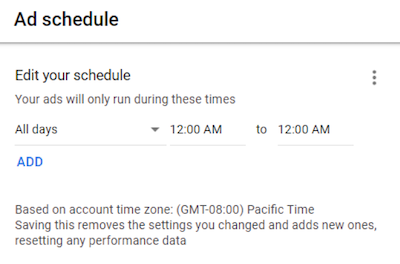3 Major Differences Between Google Ads and Microsoft Advertising
It does not take much effort for an advertiser to import their campaigns from Google Ads straight into Microsoft Ads. But the most common mistake I tend to see is optimizing Microsoft Ads in the exact same way as with their Google Ads account. There are several differences between the two advertising platforms that advertisers need to remember to better optimize their campaigns.

Microsoft Advertising search ads might look similar to Google Ads, but it’s important to remember the differences.
In this post, I’ll share three major differences between Google and Microsoft that you need to know to get started. That way, next time you go in and optimize the mentioned areas in the channels, you will feel confident you are making the right decisions!
Ad scheduling
One way users can target their ads, or even just make certain bid adjustments, is with ad scheduling. Advertisers can choose the time of day and day of the week they would want their ads to be shown. They can also schedule times to make certain bid adjustments. What advertisers may have to be careful of doing is making the same ad schedule adjustments in both Google Ads and Microsoft Ads by default. It’s important to remember that these are different channels, so you need to know how ad scheduling works for each channel and check the data to see what performs best for your account.

In Google Ads, when you go to edit your ad schedule (as seen above), Google reminds you what time zone your account is in. This is because your ad schedule in Google is based upon the time zone you chose when you created your Google Ads account. In the image above, the account is Pacific Time and targeting all days at all hours. If this account is targeting the United States but wanted to change the hours to 8:00 a.m. to 5:00 p.m., then they would have to keep in mind that users on Eastern Time would see the ads from 11:00 a.m. to 8:00 p.m. If this does not sound ideal, the advertiser will have to create separate campaigns if they want to keep every time zone set to the same hours.

Now with Microsoft Ads, ad scheduling works differently. As seen in the image above, you can see Microsoft’s ad scheduling is based on the location of the person viewing the ad. So the same advertiser could still target the entire United States, keep the hours to 8:00 a.m. to 5:00 p.m. and not have to have several campaigns to execute this.
Search partner targeting options
Both Google Ads and Microsoft Ads have search partner networks. These are other sites allowing advertisers to expand the reach of their search network ads beyond the main Google.com and Bing.com domains. In this section, there are a few differences between the channels. The search partner networks differ between Google and Microsoft, and the way we can target each network is different, too. Also, Google’s search partners are set at the campaign level. In Microsoft, we can adjust our ad network distribution at the ad group level.
Google’s Search Partner Network includes hundreds of websites (ask.com, for example), as well as other Google sites, such as YouTube. By default, Google will automatically include your campaigns in the Search Partners setting. If you see the results for search partners is subpar when segmenting your campaign data, it only takes two clicks of your mouse to remove partners and save the settings. Unfortunately, in Google, targeting search partners is either an “all in” or “all out” feature. You cannot target just the search partners in Google.

When adjusting your ad distribution settings in Microsoft Ads, you’ll be able to see that besides Bing, your ads could show on the AOL and Yahoo networks. Now, unlike Google, there is not an option to target your search network ads on just Bing.com, which is unfortunate. Even if you wanted to target just search network sites, you still have to pick the option of Bing, AOL, and Yahoo lumped together.

What I like about the ad distribution in Microsoft Ads is they have options separating their partners by “owned and operated” and “syndicated search partners.” Now for whatever reason, if you see that one of the partner options performs significantly better than the others, you have the ability to use a “target only” targeting method for your ad groups. That’s a big difference in how you can optimize your campaigns to try and maximize performance as much as possible on these channels.
In-market audiences for search
If you want to bid differently to groups of users who are more likely to be actively researching or ready to buy in a specific category of products or services, Google Ads and Microsoft Ads both allow advertisers to add these in-market audiences to setwork campaigns. We also have the option to use these audiences from a targeting or observation (bid only for Microsoft) capacity in our settings. In both channels, we can also increase our bids on these audiences by up to 900%, or decrease bids for these audiences by up to 90%

What the major difference is for these audiences between the two channels are actual options we have to add to our campaigns within each channel. For example Microsoft has a “Social” category with subcategory options, like “Romance & Relationships” or “Takeout & Delivery.” Google does not have these options. And there are several other categories or subcategories each channel has that the other doesn’t. Take some time to see if you missed out adding additional in-market audience layers to your campaigns because you assumed they were the same between the channels.
At the time of writing this post, I couldn’t find a list of all the in-market audiences available in Google. But here is a list of all of the Microsoft in-market audiences that are updated as new ones are added.
Remember, Google Ads and Microsoft Advertising are separate channels
The ability to easily export Google Ads account information to Microsoft Advertising is a huge time-saver. But that doesn’t mean Microsoft Advertising is a copy-and-paste channel. You may not get as much traffic in Microsoft as you do with Google, or you may not spend as much with Microsoft as you do with Google, but you need to optimize for each platform in order to get the benefits of a cross-platform strategy. Here are the three key differences to review:
- Ad scheduling
- Search partner targeting options
- In-market audience for search campaigns
The more we know how to use the channels, the better our optimizations will be. I only mentioned a few of the differences between the two channels, but I’m sure there are plenty more we could talk about. If you have any more to contribute, let us know in the comments below.
Digital & Social Articles on Business 2 Community
(32)


